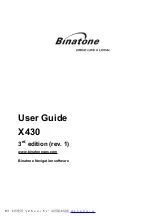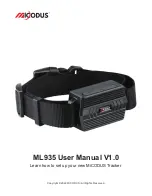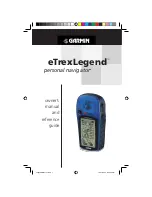
NAVMAN
8120/8084
Installation and Operation Manual
36
A
School of fish
B
Single fish
C
Hard bottoms such as rock and coral show
as wide bands
D
Soft bottoms such as mud, weed and sand
show as narrow bands
9-2 Interpreting the display
The sonar windows do not show a fixed
distance travelled by the boat; rather, they
display a history, showing what has passed
below the boat during a certain period of
time.
The history of the sonar signal displayed
depends the depth of the water and the scroll
speed setting.
In shallow water, the echoes have a short
distance to travel between the bottom and
the boat. In deep water, the history moves
across the window more slowly because the
echoes take longer to travel between the
bottom and the boat. For example, when the
scroll speed is set to
Fast
, at depths over
1000 ft (300 m) it takes about 2 minutes for
the data to move across the window, whereas
at 20 ft (6 m) it takes only about 25 seconds.
The most recent echo appears on the
extreme right of the window, with the older
echoes being scrolled towards the left,
eventually disappearing off the window.
The scroll speed depends upon the water
depth and scroll speed setting. See sections
19-3 and section 9-2, for more information.
The appearance of echoes displayed are
affected by:
• The Instrument settings (see sections 19-3,
9-5 and 9-6)
• Echoes (different fish types, different
bottom types, wrecks and seaweed; see
section 9-2)
• Noise (water clarity and bubbles; see
section 9-2).
Cruise, Fishing and Manual Modes
The Instrument has three sonar operating
modes:
•
Cruising mode:
Use this when on the
move. The Instrument automatically
adjusts its settings to compensate for
water clarity and to display the bottom.
•
Fishing mode:
Use this when fishing.
The Instrument automatically adjusts its
settings to compensate for water clarity
and to best display fish, the bottom and
other details.
•
Manual mode:
Use this to fine-tune the
Instrument settings by hand. Best results
are often achieved in manual mode, but
practice and experience are required to
obtain the optimum settings for different
conditions.
For more information about modes, see
sections 9-5 and 9-6.
!
WARNING
Use the automatic Cruising or Fishing
modes when learning to use the
Instrument or when travelling at speed.
B
A
D
C
















































